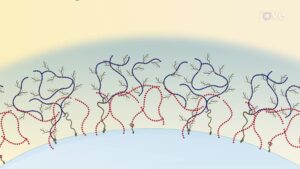Aging is often seen as a natural process shaped by genetics, lifestyle, and environment. While most people associate aging with visible signs such as wrinkles or fatigue, emerging research suggests hidden environmental triggers may accelerate the process. One of the least recognized—yet highly impactful—factors is exposure to mold and the toxins it produces. Mold-related illnesses go far beyond allergies, potentially affecting cellular health, hormones, and even DNA integrity.
Understanding Mold and Mycotoxins
Mold is a type of fungus that thrives in damp or humid environments. While harmless strains exist, certain molds release mycotoxins—toxic byproducts that can negatively affect human health. Unlike visible mold spots or musty odors, these toxins are microscopic and can spread through indoor air, contaminated food, and even water-damaged building materials. According to the National Institutes of Health (NIH), chronic exposure to mycotoxins can lead to inflammation, oxidative stress, and impaired organ function [NIH].
How Mold Accelerates the Aging Process
Anti-aging discussions often center on diet, exercise, and skincare, but mold may be an overlooked accelerator of cellular decline. Here are the key ways mold toxins can contribute to premature aging:
- Cellular Inflammation: Chronic low-grade inflammation, triggered by mold, acts like “rust” in the body. Over time, this damages tissues, organs, and metabolic processes.
- Hormone Disruption: Mycotoxins interfere with endocrine balance, potentially leading to thyroid imbalances, weight changes, and reproductive health challenges.
- DNA and Telomere Damage: Oxidative stress from mold exposure can shorten telomeres, the protective caps on chromosomes that serve as biological clocks for aging.
- Mitochondrial Impairment: The energy-producing “powerhouses” of cells often suffer under toxin exposure, leading to fatigue, slower healing, and reduced vitality.
- Cognitive Decline: Research suggests that mold toxins may contribute to memory loss, brain fog, and mood disturbances, particularly in genetically susceptible individuals.
Common Sources of Mold and Exposure
Mold is not limited to old or visibly damaged buildings. Many environments can harbor toxins without obvious signs:
- Indoor Environments: Basements, bathrooms, HVAC systems, and any area with water damage.
- Contaminated Foods: Grains, nuts, coffee, and even wine are known carriers of mycotoxins.
- Hidden Moisture: Warping walls, stains, and musty odors often signal deeper mold growth within structures.
Even regions with dry climates are not immune. Mold requires only 24–48 hours of moisture exposure on organic material, such as wood, to grow. Living in arid areas like Nevada or Arizona does not eliminate the risk.
Recognizing Mold-Related Symptoms
Mold illness is challenging to diagnose because symptoms often overlap with other conditions. Warning signs may include:
- Persistent fatigue or chronic tiredness
- Brain fog, memory lapses, or mood changes
- Unexplained weight gain or hormonal imbalance
- Recurrent sinus or respiratory infections
- Feeling worse in specific rooms or buildings
Because genetics play a role in sensitivity, some individuals in a household may experience severe reactions while others remain unaffected. This variability can delay recognition of mold as the underlying issue.
Testing and Diagnosis
When mold exposure is suspected, testing is critical. Evaluations may involve both environmental inspection and medical testing for biomarkers of mold toxicity. Importantly, both the individual and the environment must be assessed together. Addressing one without the other leads to ongoing reinfection and health setbacks.
Detoxifying and Supporting Recovery
Once exposure is identified, the first step is removal from the contaminated environment. Addressing the home or workplace mold problem is as important as treating the body itself. Treatment strategies often include:
- Binders: Natural binders such as activated charcoal, fulvic acid, or okra can capture toxins in the gastrointestinal tract, preventing reabsorption.
- Glutathione: Known as the “master antioxidant,” glutathione supports liver detoxification and cellular defense. However, not all individuals tolerate it, making professional guidance essential.
- Nutritional Support: Supplements like CoQ10, NAD, and antioxidants (vitamins C, A, and E) may restore mitochondrial function and reduce oxidative stress [PubMed].
- Air Filtration: High-quality HEPA filters and humidity control can significantly reduce airborne mold spores indoors.
Anti-Aging and Longevity Strategies Beyond Mold
Addressing mold is part of a larger anti-aging framework. Protecting long-term vitality requires a comprehensive approach:
- Maintaining hormone balance
- Reducing oxidative stress through diet and lifestyle
- Supporting mitochondrial energy production
- Prioritizing sleep, exercise, and clean nutrition
By combining environmental awareness with cellular support, individuals can better safeguard longevity and age more gracefully.
Video Summary
For more evidence-based nutrition and fitness tips, subscribe to our channel: https://www.youtube.com/@Vitality-and-Wellness
Looking for extra help with your fitness goals? Check out the personalized Nutrition Program at Parkway Athletic Club: parkwayathleticclub.com/nutrition
Disclaimer: This content is for educational purposes and does not replace personalized medical advice.



